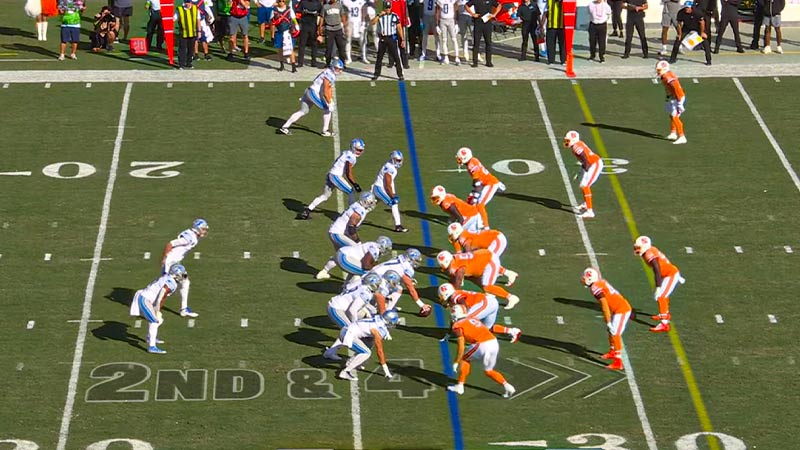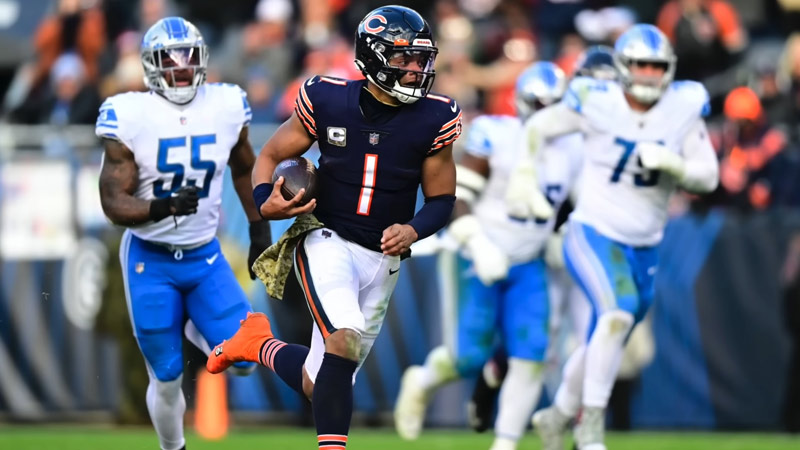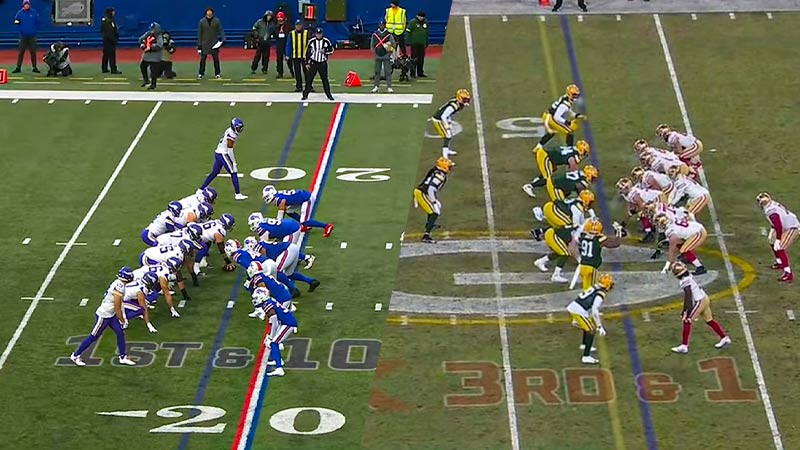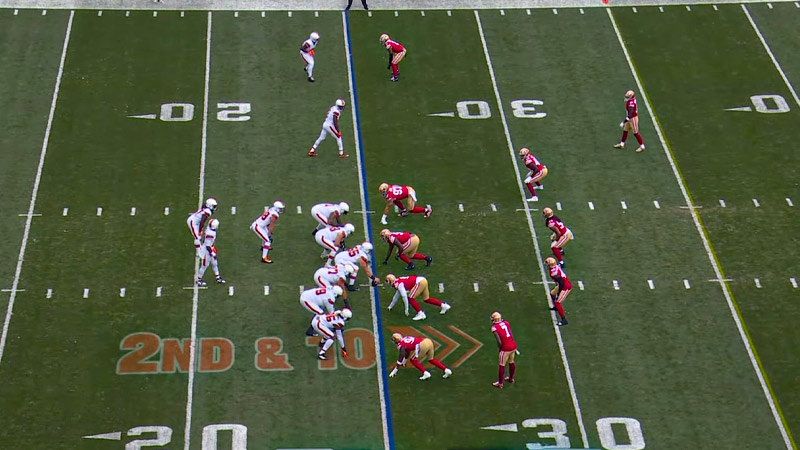In the exhilarating world of football, where strategy and athleticism combine to create captivating games, the role of the halfback stands out as one of pivotal importance.
Whether it’s football, association football, or rugby, the halfback plays a central role in the team’s performance and success. Yet, the question lingers: “What Does a Halfback Do in Football?” To unravel the multifaceted responsibilities of this position is to delve into the heart of the game.
From running with the ball to orchestrating plays, from creating scoring opportunities to shielding the defense, the halfback is a linchpin in the team’s offensive and defensive strategies.
They are the conductors, the engines, and the glue that binds the team’s actions together on the field. In this exploration, we’ll dive deep into the world of football to decipher the dynamic role of the halfback and the impact it has on the beautiful game.
What Is A Halfback In Football?
In football, a halfback, also known as a running back or tailback, is a key player in the offense. This position is characterized by its versatility and multifaceted role. The primary responsibility of a halfback is to carry the football, either by running with it or catching passes from the quarterback.
They are often the offensive playmakers, relied upon to gain yards and score touchdowns. Halfbacks are known for their agility, speed, and ability to evade defenders.
They must also be adept at blocking to protect the quarterback or other runners. Additionally, halfbacks are involved in special teams, such as returning kickoffs or punts.
The position requires a unique blend of skills, including vision, balance, and explosiveness, making halfbacks integral to the success of an American football team’s offense.
What Are Some Alignments Of Halfbacks In Football?
In football, the halfback, also known as the running back, can align in various positions and formations to maximize their effectiveness in different offensive strategies.
Here are some common alignments of a halfback:
I-Formation Halfback

In the classic I-formation, the halfback aligns directly behind the quarterback, typically a few yards back. This alignment allows the halfback to receive handoffs directly from the quarterback and gives them a good view of the field for running or blocking.
Singleback Formation
In the singleback formation, the halfback is the sole running back in the backfield. They line up several yards behind the quarterback, providing a balanced offensive formation and options for running, receiving, or blocking.
Shotgun Formation
In the shotgun formation, the halfback lines up beside or slightly behind the quarterback, who is positioned several yards behind the line of scrimmage.
This alignment is often used in passing situations, giving the halfback quick access to receiving passes or executing screenplays.
Wingback
In some formations, such as the wing-T or single-wing, the halfback aligns as a wingback, positioned off to the side and slightly behind the line of scrimmage. This allows for misdirection plays, sweeps, and options in the running game.
Split Backs
In split-back formations, two halfbacks align on either side of the quarterback, creating a balanced backfield. This alignment offers versatility, with both halfbacks capable of running, receiving, or blocking as needed.
Motion Back
The halfback can start in motion before the snap, moving laterally across the formation. This motion can create confusion for the defense, as it may indicate potential pass routes, reverses, or sweeps.
Offset Back
In certain formations, like the offset I-formation, the halfback lines up slightly offset to one side of the quarterback, often to provide better-blocking angles or to set up specific running plays to that side.
The alignment of the halfbacks varies based on the offensive scheme, strategy, and play-calling, allowing them to adapt to different situations and contribute to the team’s success in multiple ways, whether it’s running the ball, catching passes, or blocking for their teammates.
What Does A Halfback Do In Football?
A halfback, also known as a running back, plays a crucial role in football, contributing in various ways to the team’s offense. Here are some key responsibilities and actions that a halfback typically performs:
Running the Ball

One of the primary roles of a halfback is to carry the football and advance it down the field by running. They must navigate through the defense, find running lanes, and use their speed and agility to gain yards.
This involves making quick decisions, juking past defenders, and following the blocks of their offensive linemen.
Receiving Passes
Halfbacks are versatile players who can catch passes from the quarterback. They often run routes as receivers, becoming potential targets for short passes, screenplays, and dump-offs. Their ability to catch passes adds another dimension to the offense.
Blocking
While running or passing, halfbacks may need to block for the quarterback or protect them from oncoming defenders. This requires good blocking technique and the willingness to stand their ground against larger opponents.
Blitz Pickup
Halfbacks play a crucial role in pass protection, especially when facing a blitzing defense. They must recognize blitzing defenders and pick up their blocks to give the quarterback more time to make a pass.
Pass Routes
In addition to receiving passes, halfbacks run specific pass routes that are designed to create mismatches with linebackers or safeties in coverage. They need to run crisp routes and make themselves available to the quarterback.
Yardage After Contact
Successful halfbacks excel at gaining additional yards after initial contact with defenders. They use their strength and determination to break tackles and extend plays, turning short gains into substantial yardage.
Ball Security
Protecting the football is paramount for a halfback. Fumbles can be costly turnovers, so they must maintain a secure grip on the ball while running through traffic and when being tackled.
A halfback is a multifaceted player in American football, contributing as a runner, receiver, blocker, and even a pass protector.
Their ability to perform these tasks effectively is crucial to the success of the offense, as they play a key role in moving the ball down the field and putting points on the scoreboard.
What Is The Difference Between A Halfback And A Fullback In Football?

In football, the positions of halfback and fullback have distinct roles and responsibilities on the field. Here are the key differences that set them apart:
Primary Running Responsibilities
- Halfback: The halfback, also known as the running back, is primarily responsible for carrying the football and gaining yards on running plays. They are often the featured ball carrier and are known for their speed and agility.
- Fullback: The fullback’s primary role is to serve as a lead blocker for the halfback or running back. While they can carry the ball on occasion, their main focus is clearing a path for the ball carrier through blocking.
Running Style
- Halfback: Halfbacks are typically faster, more elusive, and better at making quick cuts to evade defenders. They excel at running in open spaces and are often used in outside runs and screenplays.
- Fullback: Fullbacks tend to be more powerful and physical. They are often used in short-yardage situations and as a lead blocker in running plays.
Pass-catching Abilities
- Halfbacks: Halfbacks are often used as receiving options in passing plays. They run routes and catch passes from the quarterback, adding versatility to the offense.
- Fullback: While fullbacks can catch passes, they are less frequently used as receiving targets compared to halfbacks.
Pass Protection
- Halfbacks: Halfbacks are involved in pass protection, but their primary focus is running and receiving. They pick up blitzing defenders and protect the quarterback when necessary.
- Fullback: Fullbacks are often used as extra pass protectors due to their physicality. They help shield the quarterback from oncoming rushers.
Position in Formations
- Halfback: The halfback typically lines up behind or beside the quarterback, a bit deeper in the offensive formation.
- Fullback: The fullback lines up closer to the line of scrimmage and often in a more central or offset position in the backfield.
Usage in Short-yardage Plays
- Halfback: Halfbacks are less commonly used in short-yardage situations, where the team needs only a few yards for a first down or a touchdown.
- Fullback: Fullbacks are frequently utilized in short-yardage and goal-line situations due to their ability to gain tough, physical yards.
Special Teams
- Halfbacks: Halfbacks may be involved in returning kicks or punts, but this is less common than for other positions.
- Fullback: Fullbacks are often utilized on special teams, particularly as blockers or coverage players due to their physicality. While both halfbacks and fullbacks play important roles in American football, their responsibilities, running styles, and usage within offensive schemes differ significantly.
Halfbacks are typically the featured runners and pass-catching threats, while fullbacks are known for their blocking prowess and short-yardage effectiveness.
FAQs
What Is the Role of a Halfback in Football?
A halfback in football plays a versatile role, primarily focused on ball possession, distribution, and offensive strategy. They carry the ball, pass it to teammates, and create scoring opportunities.
Additionally, they often participate in defensive efforts by pressuring opponents and regaining possession.
How Does a Halfback Contribute to Scoring in Football?
A halfback contributes to scoring in several ways. They can score goals or touchdowns by carrying the ball into the opposing team’s end zone. They also set up scoring chances by passing the ball to forwards or other attacking players.
Their ability to read the game and make precise passes is crucial in creating scoring opportunities.
Is a Halfback Responsible for Defensive Play as Well?
Yes, a halfback’s role often includes defensive responsibilities. They can intercept passes, tackle opponents, and help regain possession of the ball. Balancing offensive and defensive duties is a key aspect of a halfback’s role.
What Skills Are Essential for a Successful Halfback in Football?
Successful halfbacks possess a combination of skills, including ball control, passing accuracy, vision, agility, and defensive prowess. They must also have a good understanding of the game’s tactics and strategies to make effective decisions on the field.
Can a Halfback Be a Team Captain in Football?
Yes, halfbacks can be team captains. Their central role on the field often makes them natural leaders who can guide the team’s play, set the tempo, and inspire their teammates.
Leadership qualities, communication, and a deep understanding of the game are essential for a halfback to excel as a captain.
Conclusion
In the grand tapestry of football, the role of the halfback emerges as a symbol of versatility and dynamism. Their contributions extend far beyond running with the ball; they are the orchestrators of offensive plays, the midfield maestros, and the unsung heroes of the defensive line.
The halfback’s ability to balance attacking prowess with defensive responsibilities is a testament to their skill and tactical acumen.
Whether it’s an American football halfback sprinting through a defensive line, a soccer midfielder controlling the tempo of the match, or a rugby halfback setting up scoring opportunities, their impact on the game is undeniable.
As we unravel the intricacies of the halfback’s role in football, we gain a deeper appreciation for the artistry, intelligence, and athleticism required to excel in this pivotal position.
In essence, the halfback is the embodiment of the game’s essence: strategy, teamwork, and the pursuit of victory.







